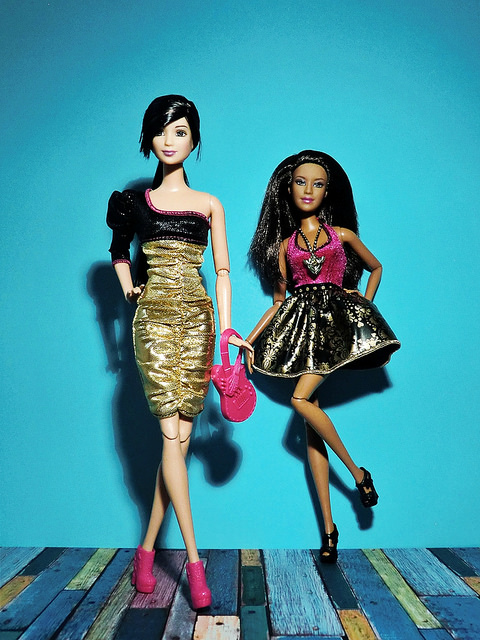Unveiling the Untold Tale: The Authentic Pioneer Barbie’s Voyage to Space on a Classified Mission
In a surprising turn of events, it has been revealed that the recently displayed Barbie dolls at the Smithsonian are not the first to have traveled to space. The “Space Discovery” dolls, which made their debut at the National Air and Space Museum’s Steven F. Udvar-Hazy Center in Virginia, were indeed launched into orbit in 2022, making them the first Barbie dolls to fly into space by arrangement with Mattel, the toy company behind the iconic fashion figure brand. However, a previously undisclosed Barbie doll had actually made the journey 32 years earlier on a classified space shuttle mission.
The story of this earlier Barbie doll begins in 1989 when Steve Denison, a space shuttle payload training engineer at NASA’s Johnson Space Center in Houston, received the doll as part of a “white elephant” holiday gift exchange. Denison and his fellow astronaut instructors decided to hide the Barbie doll in the shuttle simulator before each training run, providing some levity and amusement during their long hours spent in the simulator. The crew became so attached to the doll that they wanted to take her up as their mascot on their upcoming spaceflight.
To prepare Barbie for her journey, the wife of one of Denison’s fellow crew instructors sewed an orange jumpsuit for the doll and styled her hair. On November 15, 1990, Barbie and the STS-38 crew lifted off aboard the space shuttle Atlantis, embarking on a nearly five-day mission for the Department of Defense. While not much is known about the specifics of their activities in orbit due to the classified nature of the flight, one photo does exist of Barbie floating in front of a window with Earth as her backdrop. The astronauts even inscribed and autographed a photo for Denison, humorously stating that Barbie was still needed for their next simulator run.
Interestingly, Mattel, the manufacturer of Barbie, was not aware of her spaceflight until a couple of years later when the mission was highlighted in a company newsletter. The doll’s custom spacesuit seamstress, who had since started working for the National Archives, arranged for Barbie to be temporarily displayed at the Dwight D. Eisenhower Presidential Library and Museum in Kansas in 1999 as part of an exhibit celebrating 40 years of Barbie. Since then, the doll has remained with Denison at his home, leading to her forgotten status as the first Barbie to go to space.
The Smithsonian, upon learning of this earlier spacefaring Barbie, plans to revise their current display. Although it does not change the museum’s interest in the first officially flown Barbie dolls to go to the International Space Station, they acknowledge the significance of this earlier doll and its personal meaning to the crew. Margaret Weitekamp, curator of the National Air and Space Museum’s social and cultural history of spaceflight collection, emphasizes the importance of flown memorabilia in illustrating how astronauts and ground crews personalized their workspace.
While the “Space Discovery” Barbie dolls hold the distinction of being the first officially flown Barbie dolls to reach the International Space Station, the revelation of this earlier doll adds a new layer of history and personal connection to space exploration. It serves as a reminder that even in the vastness of space, there are moments of lightheartedness and humanity that bring joy and inspiration to those involved in the exploration of the unknown.
